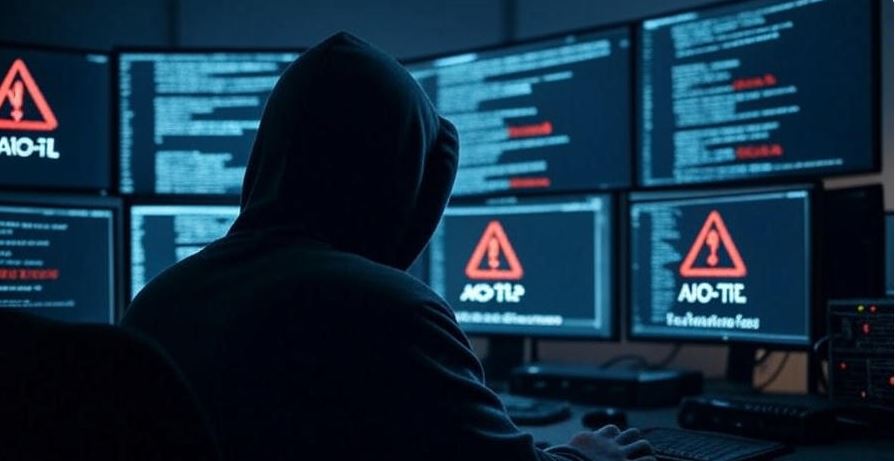In the ever-evolving landscape of cybersecurity, data leaks and information breaches are becoming increasingly common. One of the most recent and concerning incidents involves the keyword: thejavasea.me leaks aio-tlp. This breach has stirred discussions among cybersecurity professionals, ethical hackers, and concerned users alike. It has raised vital questions about data protection, digital responsibility, and the potential misuse of leaked information.
This article explores the details surrounding thejavasea.me leaks aio-tlp, outlines the scope of the breach, investigates its possible impact, and offers guidance on how individuals and organizations can protect themselves from similar threats.
What is TheJavaSea.me and AIO-TLP?
Understanding TheJavaSea.me
TheJavaSea.me is believed to be a lesser-known yet potentially dangerous platform that surfaced within darknet forums and online leak directories. While it remained under the radar for a long time, recent activities linked to large-scale data dumps have brought it into the spotlight.
Decoding AIO-TLP
AIO-TLP stands for “All-In-One Threat Leak Package.” It appears to be a bundled collection of sensitive data, potentially including credentials, financial records, government IDs, proprietary documents, and more. The TLP designation may refer to “Traffic Light Protocol” levels (Red, Amber, Green, White), commonly used in cybersecurity to classify the sensitivity of shared information.
This combination suggests that TheJavaSea.me was involved in compiling and releasing structured data leaks under the AIO-TLP naming convention, making it a targeted risk for individuals and institutions alike.
Key Findings of the Leak
1. Scope of the Data
The leak includes various types of personally identifiable information (PII), such as:
- Email and password combinations
- Passport scans and ID documents
- Bank account information
- Enterprise login credentials
- Confidential project files
2. File Packages Identified
Several AIO-TLP packages have surfaced online with specific identifiers, such as:
- AIO-TLP287
- AIO-TLP370
- AIO-TLP619
These packages often range from a few hundred megabytes to several gigabytes and are distributed through P2P networks, private forums, or downloadable archive links.
3. Verification & Authenticity
Cybersecurity researchers have verified that portions of the leaked data match real-world credentials through dark web monitoring tools and internal audits. This elevates the severity of the breach, as the data appears both authentic and usable.

How Did the Leak Happen?
Common Theories Surrounding the Breach
- Insider Threat: Unauthorized access by individuals within organizations who had access to sensitive files.
- Exploited Vulnerabilities: Exploits in outdated CMS systems, exposed APIs, or insecure cloud storage.
- Phishing Attacks: Targeted social engineering attacks to gain admin-level access.
Potential Role of AI and Automation
There is speculation that automated scraping tools and AI-based data processors were used to compile and sort the data into categorized AIO-TLP packages.
Who is Affected?
Individual Users
- Victims of identity theft and phishing attacks
- Unauthorized access to personal accounts
Businesses
- Leakage of corporate email IDs and login credentials
- Exposed NDAs, contracts, or client details
Government & Public Institutions
- Risks of espionage or unauthorized access to restricted files
- Diplomatic concerns depending on the nature of the data
The Legal and Ethical Concerns
Jurisdictional Challenges
Due to the cross-border nature of data breaches, legal recourse becomes complex. The host server location, domain registration, and origin of the leak may span different legal jurisdictions.
Ethical Dilemmas
- Should media outlets report on leaks if it promotes public awareness?
- Should researchers analyze leaks for protection, or does it enable further misuse?
Regulatory bodies must walk a tightrope between protecting privacy and ensuring public transparency.
How to Protect Yourself from Similar Leaks
For Individuals
- Use strong, unique passwords and change them regularly
- Enable two-factor authentication (2FA)
- Monitor personal data on leak-detection services like HaveIBeenPwned
For Businesses
- Conduct regular security audits
- Train staff on phishing awareness
- Employ endpoint security and intrusion detection systems
For Government & Institutions
- Enforce stricter cybersecurity policies
- Vet and monitor access to sensitive data
- Collaborate with international cybersecurity frameworks

What This Leak Means for the Future
More Sophisticated Attacks
The structured and segmented nature of AIO-TLP leaks suggests that cybercriminals are evolving. These actors are creating leak packages that resemble software products—packaged, labeled, and distributed with precision.
Growth of the Darknet Economy
With increasing demand for such packages, the darknet marketplace continues to thrive, further complicating takedown efforts.
The Need for Proactive Governance
Lawmakers and international agencies must adopt AI-driven surveillance and international cooperation to prevent similar leaks in the future.
FAQs
What does “thejavasea.me leaks aio-tlp” refer to?
It refers to a significant data breach involving a website named TheJavaSea.me that allegedly compiled and released a series of data dumps under the label AIO-TLP, short for All-In-One Threat Leak Package.
Is my data included in the AIO-TLP leak?
The only way to confirm this is by using leak-monitoring tools or contacting cybersecurity professionals. Avoid clicking on unverified links claiming to show leaked data.
What should I do if I suspect my information was leaked?
Immediately change your passwords, enable two-factor authentication, and contact relevant institutions (banks, email providers, etc.) to monitor your accounts.
Are the AIO-TLP leaks legal to download or view?
No. Accessing or downloading leaked data may be illegal in many jurisdictions. Doing so can also expose you to malware and surveillance.
Can organizations recover from such a leak?
Yes, with the right crisis response, improved security practices, and transparency with stakeholders, most organizations can rebuild trust and safeguard their systems.
Conclusion
Thejavasea.me leaks aio-tlp is more than just another data breach; it’s a wake-up call. Its structured dissemination and the scale of exposed information highlight an evolution in how cyber threats are packaged and delivered. As cybercriminals become more sophisticated, so too must our efforts to protect digital assets.
Individuals, corporations, and governments must work together in understanding, preventing, and responding to such breaches. Through vigilance, education, and coordinated response strategies, the impact of future leaks can be minimized—even if not entirely prevented.

